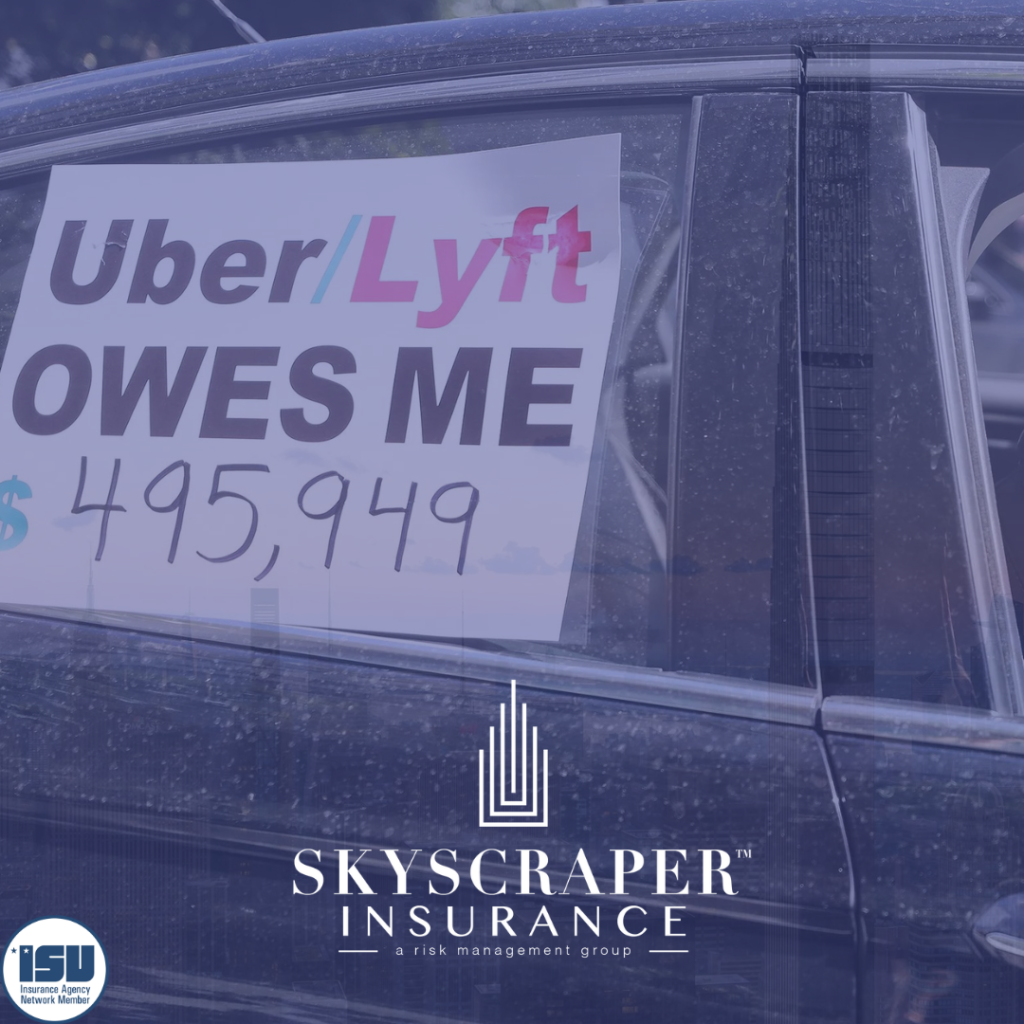Public Statement: Skyscraper Insurance Announces Acquisition of Broad Coverage Service Inc.

🌟 Public Statement: Skyscraper Insurance Announces Acquisition of Broad Coverage Service Inc. Dear Valued Community Members, Skyscraper Insurance is thrilled to announce the successful acquisition of Broad Coverage Service Inc., marking a significant milestone in our commitment to providing comprehensive and top-notch insurance solutions to communities far and wide. This strategic union brings together the strengths and expertise of both organizations, allowing us to enhance our service offerings and extend our reach to even more individuals and businesses. Skyscraper Insurance takes pride in embracing the legacy and dedication of Broad Coverage, a company known for its commitment to quality and customer satisfaction. As we embark on this exciting journey, we are pleased to reassure you that all the talented and dedicated staff members of Broad Coverage will be retained. Their wealth of experience and commitment to excellence will undoubtedly contribute to the continued success of Skyscraper Insurance. We believe that through collaboration and shared values, we can elevate our services to new heights. Our commitment to providing unparalleled coverage, personalized service, and a seamless insurance experience remains unwavering. Together with the seasoned professionals from Broad Coverage, we aim to set new standards in the industry and deliver innovative solutions that meet the evolving needs of our valued clients. We extend our heartfelt gratitude to the communities we serve for your trust and support. Skyscraper Insurance is dedicated to fostering strong relationships and ensuring the well-being of our clients. We look forward to the opportunity to serve you better and build a future together that is grounded in excellence and reliability. Thank you for your continued trust in Skyscraper Insurance. Sincerely, Chaim BerkovicPresidentSkyscraper Insurance #weshareyourvisionforabettertomorrow#skyscraperinsurance#tyh https://www.linkedin.com/posts/chaim-berkovic-25427a108_weshareyourvisionforabettertomorrow-skyscraperinsurance-activity-7132458726497656832-OpPp?utm_source=share&utm_medium=member_desktop
75% of Small Businesses Are Underinsured, Says Hiscox Survey

Small businesses may be growing their revenue, but the vast majority – 75% – are not adequately protecting themselves and their assets. Small businesses are an essential part of the US economy, with 56 million workers employed at firms with fewer than 50 employees, representing 45% of all private-sector jobs as of the first quarter of 2022, according to the US Bureau of Labor and Statistics. However, the 2023 Hiscox Underinsurance in Small Business Report, which surveyed 1,000 small businesses last July, found widespread insurance illiteracy and a nationwide underinsurance crisis, leaving small businesses open to loss risks ranging from property damage to lawsuits. Of the small businesses participating in the survey, 75% were underinsured, and over 70% did not understand what business insurance covers. Of those businesses that had coverage, 68% of those with coverage purchased it because they were concerned about the consequences of a potential claim. Only 20% noted they purchased insurance because a vendor or partner mandated it. These stats point to an opportunity for local insurance agents and brokers to step in and become an invaluable resource for small business owners. Of the small business owners with insurance, 70% still choose to purchase through an agent or broker, and most find them to be the most helpful source of information (56%). Only 29% of respondents reported choosing to purchase insurance online, while 42% preferred to purchase insurance in person, emphasizing the importance of local brick-and-mortar agents for small businesses. And small business owners need that expertise. Of those surveyed, 71% do not understand what a business owner’s policy covers and 83% fail to describe a general liability policy’s coverage correctly. Of the US small businesses operating for ten years or more, 39% have never updated their general liability insurance. TOPICS TRENDS COMMERCIAL LINES BUSINESS INSURANCE
How carriers can transition to a Digital Customer Service experience

Customers have become accustomed to digital experiences with other industries. Insurers will need to keep up, or risk falling behind and losing them to the competition. Customer expectations have been reshaped in recent years as digital technologies have enhanced the experience. This is no less true of insurance. In fact, 50% of insurance customers rank personalized digital communications as a high priority. But while customers are increasingly turning to carrier websites and portals for support, a majority of customer service today is still provided over the phone or by email. Dan Michaeli, CEO of Glia, says that while offline customer service is sometimes the preferred channel for customers, when customers are forced to disengage from the digital experience to receive support it leads to a frustrating experience and inefficiencies. And for carriers looking to transform fully to Digital Customer Service, an effective strategy can make or break the implementation. Developing an interaction strategy Michaeli notes that when customers interact with customer service, it’s a time when customer loyalty is most under stress. It’s crucial that the digital process remains seamless. “Inefficiencies come into play when the customer begins online and is forced to move offline to have their needs met,” says Michaeli. “This means restarting the process on a call with a service rep who doesn’t know where the customer is in their journey. This may lead to a poor experience due to inefficient and ineffective customer service, in turn translating to higher risk of policyholder churn.” Carriers transitioning to a greater emphasis on digital interaction can begin by simply reiterating their long-established principle — that customers are the No. 1 priority. Michaeli recommends establishing an “interaction strategy” that keeps this principle in mind at every touchpoint. With an interaction strategy, Michaeli says each customer’s needs are recognized at the beginning of their digital journey and the carrier pairs the right interaction type with the needs of the customer. For routine questions, this might mean having a virtual assistant available 24/7 to provide an answer, without requiring human assistance. And for more complex questions or needs, the policyholder can interact by their preferred digital channel — text, chat, voice or video — with collaboration features such as CoBrowsing available when needed. With an interaction strategy in place, carriers can determine the optimal mix of digital, phone and automation to increase customer satisfaction while optimizing operational efficiency. Taking the fear out of transformation Michaeli notes transformation may strike many carriers as overwhelming, but it doesn’t have to be. He recommends a step-by-step approach, testing digital interactions within workflows and then expanding when ready. “It’s best to begin with a workflow where a customer begins their experience online but has to finish over the phone,” says Michaeli “This statistically has the most significant impact on satisfaction. Forrester suggests this, seemingly minor, ‘digital disconnect’ of moving from on-screen to phone drops NPS by 29%.” Michaeli notes that carriers who don’t invest in digital interaction capabilities risk falling behind competitors who are making the investment. Meanwhile, customer expectations continue to evolve beyond the experience they’ve traditionally delivered, making the need to transition more urgent. “Customers typically buy on price and leave on experience,” said Michaeli. “So, they need to invest in Digital Customer Service now to complete the end-to-end digital experience. If they don’t, there’s a good chance their customers will leave to find a carrier that does.”
Does your business need workers’ compensation insurance for contractors?

compensation insurance for contractors? Businesses aren’t always required to buy workers’ compensation insurance for contractors but there are benefits for doing so. Learn more in this guide Contents While not legally considered as your employees, workers’ compensation laws in some states treat contractors, subcontractors, and other hired personnel as your own staff. This means that your business can be held liable if these workers become sick or injured while working for you. To avoid liability, industry experts recommend that businesses require contractors to carry workers’ compensation coverage before agreeing to work with them. But how does workers’ compensation insurance for contractors work exactly? Insurance Business answers this question and more in this article. We also talked to an expert from the Insurance Information Institute (III) to explain the benefits of taking out this type of coverage. If you’re working with an independent contractor and want to know if this is the kind of protection your business needs, then this guide can help. Read on and learn more about workers’ compensation insurance for contractors. Do you need workers compensation insurance for contractors? State laws don’t often require self-employed individuals and independent contractors to purchase workers’ compensation insurance but there are benefits for doing so. “All states workers’ compensation laws are different,” Loretta L. Worters, vice-president of media relations at III explains. “If the state laws require employees and contractors to have workers’ comp, you’ll have to provide coverage. But if it doesn’t require it, it’s still important to have coverage – even if you have health insurance as it can help prevent financial hardship.” Unlike workers’ compensation policies, health insurance plans don’t provide coverage for job-related injuries and illnesses. Having workers’ compensation insurance for contractors ensures that these types of workers are financially protected if they get sick or injured while doing their jobs. Another benefit of getting coverage is that it helps independent contractors in fulfilling the terms of their contracts. “If you’re a sole proprietor, your state may not require buying workers’ comp insurance for self-employed businesses,” Worters adds. “If you work as a general contractor or a subcontractor, you may have to buy workers’ comp insurance if the contract you signed requires it.” Many businesses require independent contractors and other hired staff to provide proof of workers’ compensation coverage. This is to avoid financial liability if a workplace accident occurs. Who are considered independent contractors? Independent contractors are workers who a business hires for a specific project as they possess the specialized skillset required to get the job done. Instead of working as a full-time employee, contractors often work on a freelance or contractual basis. Independent contractors are also referred to as 1099 contractors for tax purposes. The name comes from the Internal Revenue Service’s (IRS) Form 1099 that contractors must complete to report their earnings. A 1099 contractor varies from a W-2 employee, which is what the IRS calls someone who is employed by a business. W-2 employees have their payroll taxes deducted automatically from their paychecks and paid to the government by their employers. Contractors, meanwhile, are responsible for filing and paying their payroll taxes on a quarterly basis. Contractors are also not entitled to the same benefits as full-time or part-time employees. Health insurance and workers’ compensation coverage are some of the benefits that independent contractors don’t typically get from employers. Workers’ comp laws vary by state Workers’ compensation laws, however, sometimes vary with a state’s tax rules. “Workers who are under your direct control may be considered your employees for workers’ compensation purposes, regardless of their tax status,” Worters explains. “You may need insurance even for those receiving 1099s. So, it’s important to work with your insurance professional to make sure you have the right type and amount of coverage.” If you want to know how workers’ compensation rules work in your state, you can click on the links in the table below. These will lead you to each state board’s workers’ comp page. Workers’ compensation insurance for contractors – state-by-state breakdown WORKERS’ COMPENSATION LAWS BY STATE Alabama Indiana Nebraska South Carolina Alaska Iowa Nevada South Dakota Arizona Kansas New Hampshire Tennessee Arkansas Kentucky New Jersey Texas California Louisiana New Mexico Utah Colorado Maine New York Vermont Connecticut Maryland North Carolina Virginia Delaware Massachusetts North Dakota Washington Florida Michigan Ohio West Virginia Georgia Minnesota Oklahoma Wisconsin Hawaii Mississippi Oregon Wyoming Idaho Missouri Pennsylvania Washington, D.C. Illinois Montana Rhode Island How does workers’ compensation insurance for contractors work? Workers’ compensation is a form of business insurance that pays for the cost of medical care and a part of lost income of employees who get injured or sick due to a job-related accident. This policy provides the same type of protection, regardless of whether it has been purchased by your employer or you took it out on your own as an independent contractor. Workers’ compensation insurance comes in two parts, according to the III: Part one – Workers’ compensation In this part of a workers’ comp policy, the insurer agrees to pay any state-required compensation amount. Coverage isn’t capped, meaning the insurance company will pay any costs arising from a work-related accident. Part two – Employers’ liability This protects a business financially against lawsuits resulting from a job-related illness or injury that is not subject to state statutory benefits. Unlike part one, this policy comes with a monetary limit. Independent contractors are often not legally considered employees. But the institute points out that under workers’ compensation regulations in most states, contractors and hired staff are considered as employees. If you’re working them, you may be held liable if they get sick or injured while on the job, particularly if they don’t have coverage. Almost all states, except Texas, require businesses with a certain number of employees to purchase workers’ compensation insurance. Failure to do so has corresponding fines and penalties, which vary per state. “Not carrying insurance for five or fewer employees is a misdemeanor, but not carrying workers’ compensation insurance for more than five employees is a felony,” Worters explains. “If you
Why the Foundation of Insurance’s Future Starts with Automation

Artificial intelligence (AI) — specifically, generative AI — has dominated headlines and elicited equal parts excitement and wariness among businesses: excitement for the new insights and capabilities gained, and wariness of what it means for the future of work. Insurance is no exception. Insurers are looking for ways to shoehorn generative AI into their business. However, an inordinate focus on the possibility of AI can actually be a distraction from an overlooked technology area that perhaps merits more attention and investment — automation. In fact, now is a perfect time for the insurance industry to focus on automation. For several years now, consolidation — particularly on the retail/distribution side — has been the big story in the market. Along with consolidation come disparate systems: CRMs, ERPs, agency management systems, payables and so on. The only way to centralize these workflows effectively will be through automation, not AI. Indeed, the insurance industry is increasingly recognizing the importance of automation: According to McKinsey, investments in automation are expected to account for 50% to 60% of back-office functions by 2025. And, as the industry embraces this technology, it will become clear that efficiency isn’t the only benefit. In fact, automation is also a critical, foundational technology for remaining competitive now and into the future. Opportunities for efficiency in automation There exist significant efficiency use cases for automation in insurance, both on the retail/distribution side and the underwriting side. Let’s take an agency or brokerage as an example. These entities are tasked with being risk managers, of course. But they’re also tasked with overseeing the financial infrastructure between carriers and insurers, which includes managing trust accounts set up for the benefit of carriers, acting as collections agents and record keepers, and auditing balances between insureds, brokers, and carriers. On top of that, agencies and brokers also handle claims and act as claims liaisons. While all of these tasks are important parts of the end-to-end insurance journey, they’re not, by definition, aligned with retail’s primary function of being a risk manager. In fact, these retail-adjacent tasks, performed manually, unnecessarily consume significant time and resources. Automated systems revolutionize many of these processes. They can quickly evaluate claims, collect data, process payments, and manage carrier payables . Delays related to human error – which can cause unintended cancellations of policies – are eliminated with automation. As a subsequent benefit, customer satisfaction increases. Automation can also improve the customer experience in regular communications: Customers appreciate emails or texts with timely policy reminders and due dates for payments. An automated system managing these reminders and updates contributes to better, more streamlined customer communications at scale. Evolve and automate to improve business value Certainly, the technology is there and ripe for adoption. But some in insurance may still be hesitant to fully embrace automation, as worries persist that it would replace humans. But that hasn’t yet been borne out and likely won’t. The reality is that insurance is a complex business that requires significant human touch. On the retail side, customer-facing employees are still needed to explain coverage and advise insureds on what coverage meets their risk profiles. Collecting premium checks, generating financing agreements, managing account payables once premiums are collected — additional tasks that can be automated — add more inefficiency on top of those already mentioned. These tasks take employees away from selling and spending time servicing customers, a key differentiator in a many competitive markets. It’s a similar argument on the underwriting side, where automation can free employees from manual tasks so they can focus on setting risk. Using automation to free up important human capital and refocusing resources on unique value or core competencies is, in fact, the future of insurance. Crawl-walk-run There’s no doubt that AI will have an important place in insurance. But anyone in insurance who is considering investing in new technology should takes a crawl-walk-run approach: Embrace automation first to today’s inefficiencies, then consider how AI can solve tomorrow’s problems. In doing so, you will have laid the strong foundation required to build out greater success now and into the future.
Flight Attendants Who Blamed Uniforms for their Health Issues Win Lawsuit Against Clothing Company

Flight Attendants Who Blamed Uniforms for their Health Issues Win Lawsuit Against Clothing Company A jury in California ruled that a clothing company should pay more than $1 million to four American Airlines flight attendants who blamed chemicals used in the production of their uniforms for causing a variety of ailments including rashes, headaches and breathing problems. The verdict last week could be just the tip of the iceberg: Lawyers say they represent more than 400 other flight attendants who are making the same claims against the uniform maker. The judge has not affirmed the jury`s decision. A lawyer for the flight attendants called that step a technicality. The uniform maker`s lawyers declined to say whether they will appeal. American gave new uniforms to flight attendants in 2016, and many were happy to get them after a decade wearing the same outfit. Complaints soon followed, however. “I would wake up and my eyes would be completely swollen. I looked like I had been in a boxing match,” says Tracey Silver-Charan. “I was unable to breathe. I often felt like I was going to pass out on the job. I was coming home and my husband was running me to the urgent care.” American gave flight attendants the option of wearing their old uniforms, or even picking out an outfit at Macy`s or JCPenney, said Silver-Charan, a Los Angeles-based flight attendant who has been in the field for 37 years. Silver-Charan is part of a group of flight attendants who sued in 2017, and she was among four involved in the bellwether trial in Alameda County Superior Court near San Francisco to see how a jury would view the case. The jury decided that the uniforms provided by Twin Hill Acquisition Co. were a “substantial factor in causing harm” to the flight attendants. However, jurors said the company was not negligent in its design of the garments nor in failing to recall them when complaints began to pour in. “It`s been a long road, but we`re very happy with the outcome,” said Daniel Balaban, one of the lawyers for the airline employees. “We couldn`t represent better clients — who doesn`t love a flight attendant?” Balaban said that other cases could go to trial if Twin Hill declines to settle them. Twin Hill could ask the judge to reduce the jury award and could appeal the verdict. A lawyer for the company, Robert V. Good Jr., declined to comment when reached by phone. American eventually ended the contract with Twin Hill and contracted with Land’s End for uniforms. In their lawsuit, the flight attendants claimed that their uniforms contained traces of formaldehyde, toluene and other toxic chemicals linked to health problems. Resins containing formaldehyde have been used in fabric for years to keep clothes wrinkle-free and make them last longer. A 2010 study by congressional researchers found that formaldehyde levels in clothing is generally low, but some people suffer allergic reactions including rashes, blisters, and itchy or burning skin. Washing clothes before wearing them can help, but doesn`t always work, the researcher said. The flight attendants` lawyers put on witnesses who testified about a 2018 study by researchers at the Harvard School of Public Health, who reported finding a link between new uniforms and health complaints by Alaska Airlines attendants. Lawyers for Twin Hill put on expert witnesses who discounted the potential health effects of the uniforms. Silver-Charan said none of the defense experts ever talked to her or asked to test her uniform for chemicals. The jury proposed $320,000 in lost income and pain and suffering for Silver-Charan and $750,000 in damages for Brenda Sabbatino — the two attendants chosen by their lawyers. Defense lawyers selected two others who had reported less severe health effects. For them, the jurors proposed $10,000 and $5,000 in damages.
Courts Find ‘How Many Apartment Units Are There?’ Is an Ambiguous Question

Because its application question about how many apartments were in a New York building was considered ambiguous, an insurer has lost its bid to deny a commercial property insurance claim and rescind the policy. The Second Circuit Court of Appeals has upheld a New York federal district court ruling in favor of Fred and Ann Lee on their breach of contract claim against Union Mutual. The policy asked, “How many apartment units are there?” The Lees answered that their property had two apartment units. In so answering, they excluded the property’s finished basement from their count. Union Mutual deemed this answer to be a material misrepresentation because, in its view, the finished basement was an apartment unit, and therefore the property had a total of three apartment units. On the basis of this purported misrepresentation, Union Mutual denied coverage and rescinded the policy. The Lees sued. The federal court for the Eastern District of New York granted summary judgment in favor of the Lees on their breach of contract claim but in favor of Union Mutual on their deceptive business practices claim. In granting the Lees summary judgment on their breach of contract claim, the district court concluded that the application question regarding the number of units was ambiguous; that a “reasonable person” in their position could have interpreted the question as the Lees did, namely, that the question “referred only to units that are either occupied or could legally be occupied as apartments.” Therefore, Union Mutual could not deny coverage and rescind the policy based on the Lees’ response to that question. Union Mutual appealed but the Court of Appeals for the Second Circuit agreed with the district court, noting that an answer to an ambiguous question on an application “cannot be the basis of a claim of misrepresentation” by and insurer. “The threshold question of whether a provision in an insurance policy is ambiguous is a question of law to be determined by the court,” the appeals court stated. In its appeal, Union Mutual contended that under New York law, a question regarding the number of units unambiguously refers to the “structural configuration of the building to be insured,” or, in other words, the number of spaces in the building with “its own kitchen, bathroom, and separate entrance.” Union Mutual asserted that this is how cases applying New York law interpret the phrase, “family dwelling.” But the appeals court was not persuaded, in part because Union Mutual’s position relied upon the meaning of family dwelling, not apartment unit, and because some New York authorities examined the actual use of the premises at the time of the application or the loss, in addition to the structural configuration of the unit. The court said actual use of the Lees’ finished basement suggests that it was not an apartment unit because it was used only for storage purposes, “never used as a residence,” and “never occupied.” Also, the court noted, the application for the insurance policy does not define “apartment units.” The court found that the question is “readily susceptible” to more than one reasonable meaning. For example, the question could refer to the number of spaces that legally could be occupied or rented out as apartments, or spaces with the minimum structural configuration necessary for an apartment, which includes a full bathroom, kitchen, bedroom, and a separate entryway Union Mutual further argued that the district court erred in finding that a “reasonable person” in the Lees’ position could have interpreted the question to “refer only to units that are either occupied or could legally be occupied as apartments,” where there was no evidence of how they interpreted the question. The appeals court dismissed that argument also. The “reasonable person” standard is an objective one and thus the district court was not required to determine the Lees’ subjective views on the question; it only needed to determine how a “reasonable person” in their position could have interpreted the question, which, the appeals court noted, is what the district court did.
Uber Settles New York State Claims Related to Unemployment Benefits for Drivers

Because its application question about how many apartments were in a New York building was considered ambiguous, an insurer has lost its bid to deny a commercial property insurance claim and rescind the policy. The Second Circuit Court of Appeals has upheld a New York federal district court ruling in favor of Fred and Ann Lee on their breach of contract claim against Union Mutual. Uber Technologies has reached a settlement with the New York State Department of Labor to help ensure that eligible drivers and couriers can obtain unemployment benefits, New York Governor Kathy Hochul said on Thursday. The ride-sharing company agreed to begin making quarterly payments to the New York State Unemployment Insurance Trust Fund, which funds benefits for unemployed workers, and a retroactive payment for sums owed since 2013. While the size of the payments were not disclosed, Hochul said the “transformative” settlement made New York first U.S. state to resolve claims against Uber to address past and future unemployment insurance liability. The settlement arose from the long-simmering issue over whether Uber and rivals such as Lyft LYFT.O should classify drivers as employees or independent contractors. New York’s labor agency believes Uber’s drivers and couriers are employees for purposes of unemployment insurance, while Uber believes they are independent contractors. Thursday’s settlement does not resolve that dispute, but Hochul said Uber agreed that drivers eligible for unemployment benefits should get them. Tony West, Uber’s chief legal officer, said in a statement that the accord “will ensure drivers continue to enjoy the independence and flexibility they value, while having access to important protections.” Separately, Uber and Lyft on Thursday separately agreed to pay a combined $328 million to settle claims by New York Attorney General Letitia James that they systematically cheated drivers out of pay and benefits. Uber will pay $290 million, and Lyft will pay $38 million.
Skyscraper Insurance announce our membership in the ISU Insurance Agency Network network.

🏙️ Exciting News! Skyscraper Insurance is thrilled to announce our membership in the ISU Insurance Agency Network network. We’re incredibly grateful to be part of this vibrant community and can’t wait to foster valuable relationships within the insurance industry. Here’s to new beginnings! 🤝 #SkyscraperInsurance#ISUNetwork#InsuranceCommunity#NewBeginnings#weshareyourvisionforabettertomorrow The ISU Insurance Agency Network is one of the oldest and most respected insurance agency networks in the country. Our roots our founded on three simple principals – Independence, Strength, and Unity. Our goal is to help independent agencies remain independent, become stronger and be unified in their advancement. ISU provides independent agencies with the resources of a national organization, while allowing them to keep their local presence and independence. The ISU Insurance Agency Network (ISU IAN) is not an agency cluster, but a community of independent insurance agency members. We seek to offer best-in-class insurance solutions for our clients, are committed to remaining independent, while also leveraging the business benefits that come with being part of a large national organization. Being a member of the ISU IAN will align you with a group of like-minded insurance professionals focused on growth, profitability and the sharing of knowledge, expertise and experiences. THE POWER OF ISU
Deconstructing the Confusion: The “Contractual Liability”

Insurance Requirement in Construction Contracts In many construction contracts, it is common for standard insurance clauses to require that the downstream party (either the general contractor or a subcontractor) carry commercial general liability (CGL) insurance, and that such insurance include, among other things, coverage for “contractual liability.” This requirement often results in confusion. It’s time to clear the air on this. An Exclusion Narrowed by Exceptions Standard CGL policies, such as the CG 00 01 form, explicitly exclude liability that a business expressly agreed to assume under its contract. This is known as the “contractual liability” exclusion. That exclusion, however, is narrowed in scope by a couple of exceptions. One of the exceptions is when liability would be found in the absence of a contract (e.g., a duty to perform work safely, which is a requirement even without a contract). The other is when the liability is assumed under an “insured contract.” Under this latter exception, things become a bit more complex. Liability Assumed Under an “Insured Contract” The definitions section of the standard CGL policy defines “insured contract” in several ways. For purposes of this article, it is part “f” of the definition that matters most. This part says that “Insured contract means … that part of any other contract or agreement pertaining to your business (including an indemnification of a municipality in connection with work performed for a municipality) under which you assume the tort liability of another party to pay for “bodily injury” or “property damage” to a third person or organization. Tort liability means a liability that would be imposed by law in the absence of any contract or agreement.” With that definition in mind, we turn back to the second exception to the contractual-liability exclusion, which provides that “This exclusion does not apply to liability for damages … assumed in a contract or agreement that is an ‘insured contract’ …” Accordingly, if the contractor or subcontractor carries a standard CGL policy, then “contractual liability” is included, provided that the contract between the parties satisfies the definition of “insured contract.” Some policies, however, are amended by a Contractual Liability Limitation Endorsement, which is typically noted with ISO identifier CG 21 39. This endorsement alters the definition of “insured contract” by deleting part “f” from it. Thus, for all practical purposes, this endorsement results in rendering the all-important second exception to the contractual liability exclusion inapplicable, which could mean that a business is exposed to a risk that it expected to be covered by the downstream party. Thus, to better protect your business from an unexpected and uninsured exposure, the upstream party (either the owner or the general contractor) should make it absolutely clear in the “insurance requirements” section of contracts that any form of a Contractual Liability Limitation Endorsement will not be accepted. For additional guidance on optimizing your construction contracts, contact your Much Shelist attorney.
